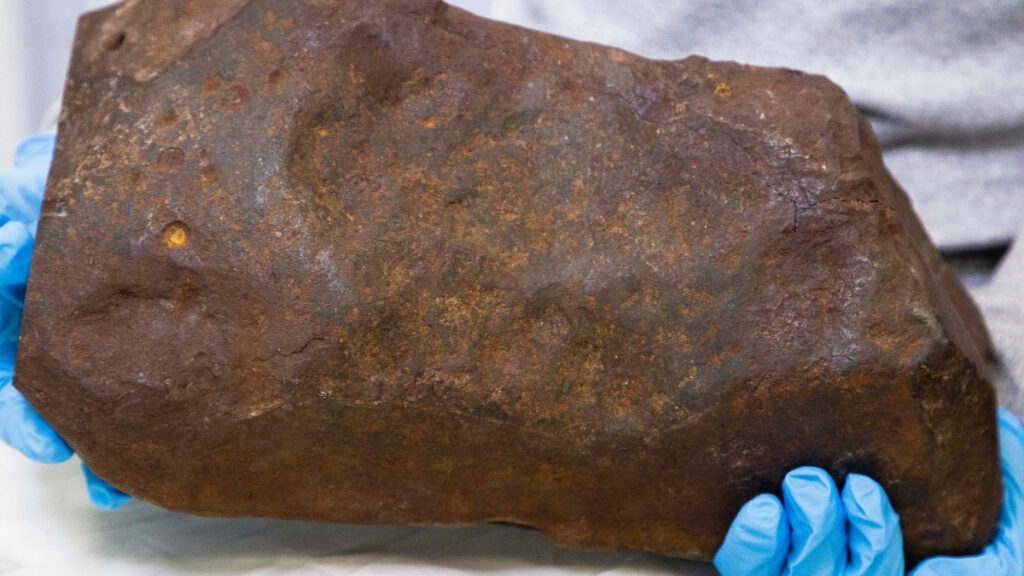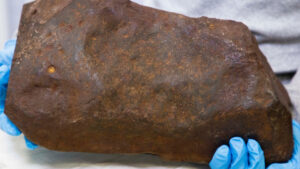
In a remarkable discovery, David Hole unearthed a meteorite in 2015 while prospecting in Maryborough Regional Park, located near Melbourne, Australia. Initially believing he had stumbled upon a gold nugget, Hole spent years attempting to break open the heavy, reddish rock that he found resting in yellow clay. His efforts included using a rock saw, an angle grinder, a drill, and even acid, but the rock remained unyielding.
Eventually, Hole sought the expertise of the Melbourne Museum for identification. The geologists confirmed that his find was not just any rock, but a rare meteorite. According to geologist Dermot Henry, the meteorite exhibits a “sculpted, dimpled look,” a characteristic formed during its passage through the atmosphere.
The meteorite, named Maryborough after the nearby town, weighs an impressive 17 kilograms (approximately 37.5 pounds) and has been dated to be around 4.6 billion years old. Researchers utilized a diamond saw to slice off a segment of the rock, revealing its composition as a high-iron H5 ordinary chondrite. This type of meteorite contains tiny crystallized droplets of metallic minerals, known as chondrules, which are of significant interest to scientists.
“Meteorites provide the cheapest form of space exploration,” Henry explained. “They transport us back in time, providing clues to the age, formation, and chemistry of our Solar System, including Earth.” Some meteorites even contain organic molecules, such as amino acids, which are essential for life.
While the specific origin of the Maryborough meteorite remains uncertain, researchers speculate that it likely originated from the asteroid belt located between Mars and Jupiter. Over time, collisions within this belt may have nudged the meteorite towards Earth. Carbon dating suggests it could have arrived anywhere from 100 to 1,000 years ago, coinciding with several meteor sightings reported between 1889 and 1951.
The significance of this find cannot be overstated. The Maryborough meteorite is one of only 17 meteorites ever recorded in the Australian state of Victoria and is the second largest chondritic mass found, following a 55-kilogram specimen discovered in 2003. “This is only the 17th meteorite found in Victoria, whereas there have been thousands of gold nuggets found,” Henry noted, emphasizing the rarity of the discovery.
The scientific community considers the Maryborough meteorite to be far more valuable than gold due to its unique properties and the insights it offers into the early Solar System. The findings were published in the Proceedings of the Royal Society of Victoria, highlighting how this exceptional rock could advance our understanding of planetary formation and the history of our cosmic neighborhood.
As Hole’s story demonstrates, precious discoveries can often be hidden in plain sight. Those with heavy, unusual rocks in their possession might want to consider seeking expert advice, as they could be sitting on a metaphorical gold mine.







